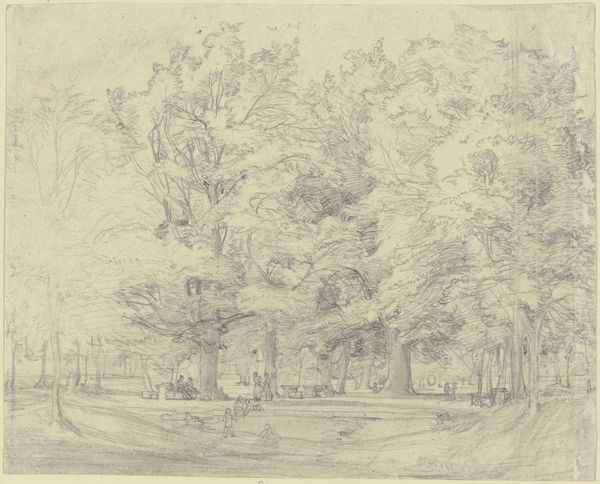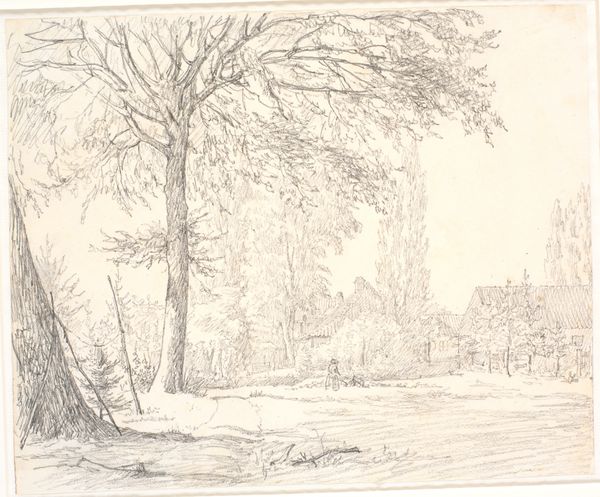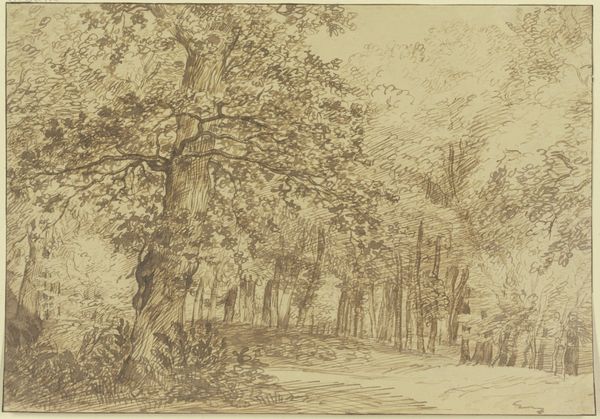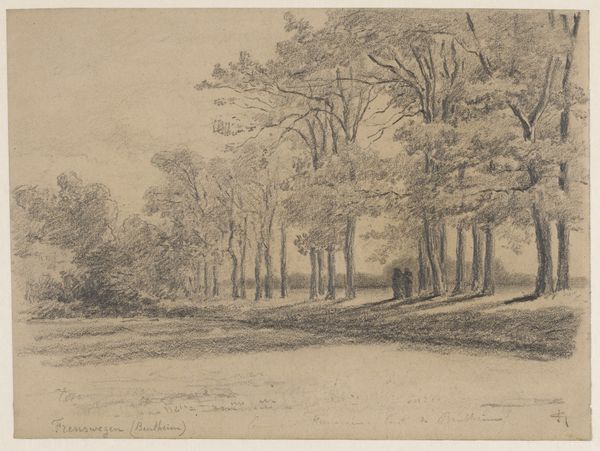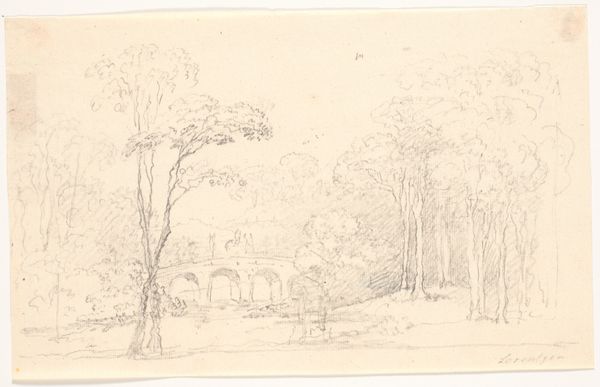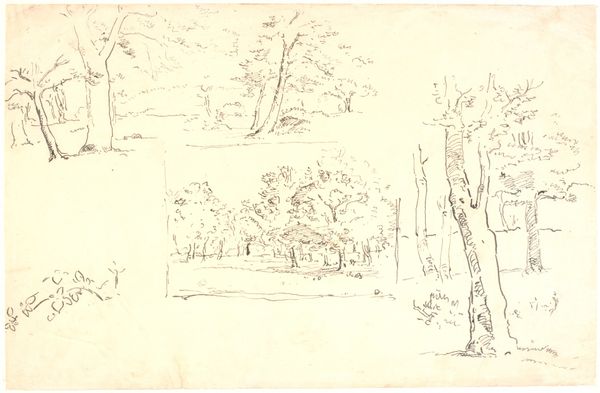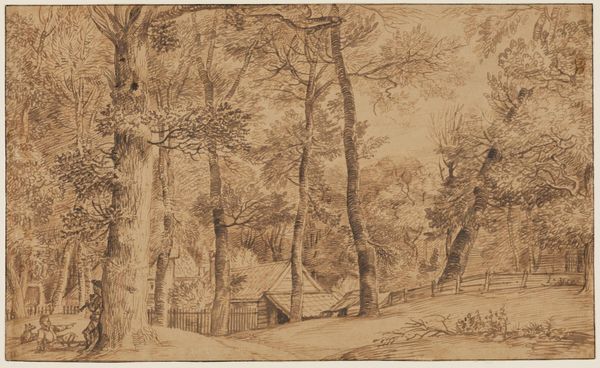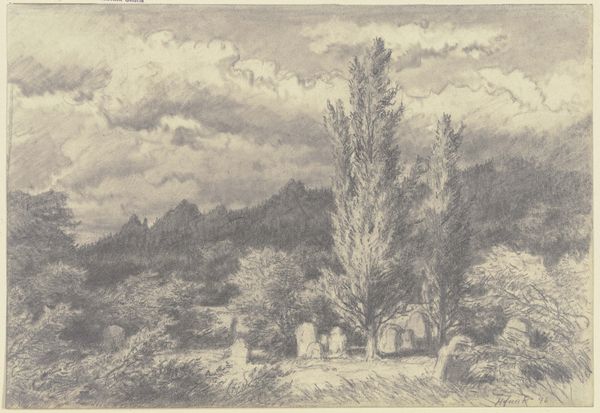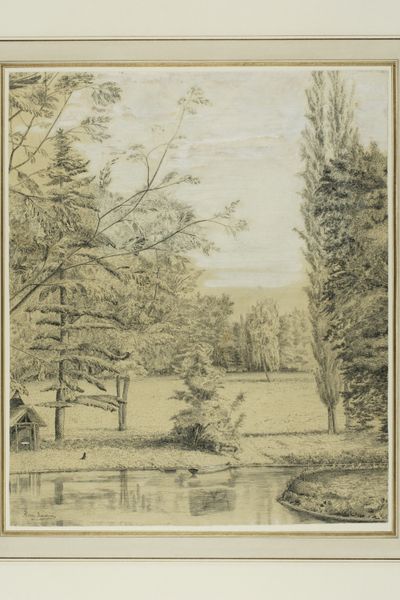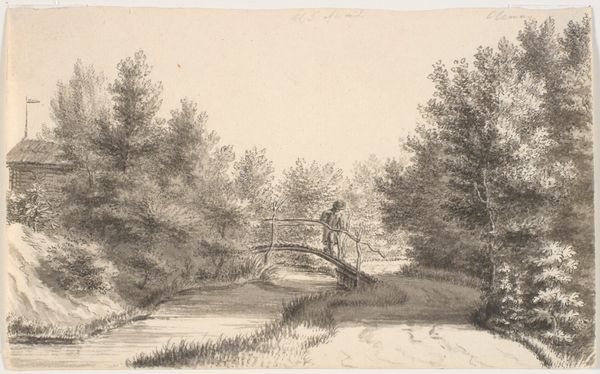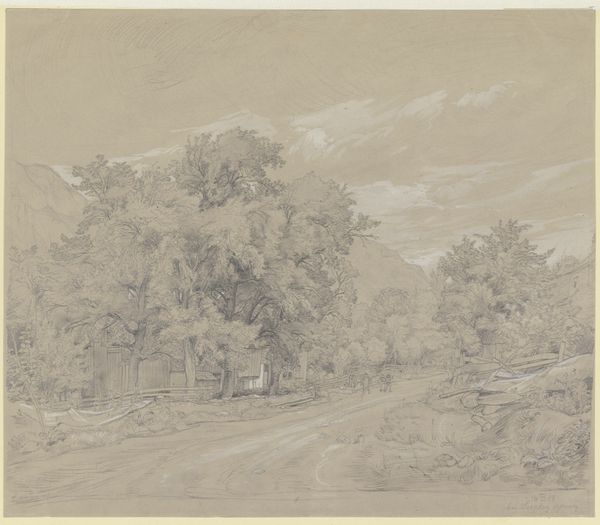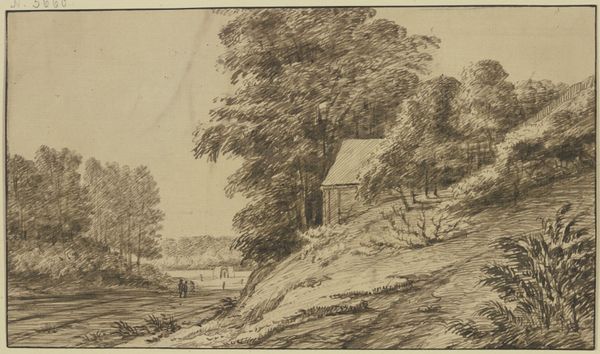
drawing, paper, pencil
#
drawing
#
16_19th-century
#
pencil sketch
#
landscape
#
paper
#
romanticism
#
pencil
Copyright: Public Domain
Editor: So, here we have "Phillippsruh," a pencil drawing, presumably from the 19th century, by Peter Becker. It’s a rather unassuming landscape, rendered in delicate strokes of pencil. It's quite peaceful, almost melancholic. What do you see in this piece, something beyond the trees and buildings? Curator: More than just trees and buildings, yes. This landscape serves as a visual echo chamber. Note how the overarching branches of the large tree to the left frame the scene. It’s like looking through a proscenium arch, the opening between the stage and the audience. Doesn’t that staging speak to how we curate our memories and landscapes, imbuing specific locales with emotional weight? Editor: That's interesting. So you see it as a carefully constructed scene? Curator: Precisely! Look at the church spire nestled among the trees. Churches, throughout art history, serve as symbols of hope, faith, a central gathering point for communities. Here, however, it feels slightly obscured, almost dreamlike. Consider what a church meant in the 19th century - promises for some, oppression for others. The symbol is complicated, weighed down. The symbolism is deliberately veiled, inviting contemplation rather than offering easy answers. What emotional or historical touchstones resonate with you? Editor: I think you’re right, I see that tension now, this quietness that is actually full of conflicting emotions and historical narratives. The idea of symbols being weighed down – that’s something I'll remember. Curator: And landscapes, especially during Romanticism, are often stand-ins for the human soul, external projections of our internal state. These aren't neutral spaces; they're canvases for our projections. Editor: Thank you, this gives me much more to consider. I appreciate your perspective. Curator: And thank you; your curiosity makes these symbols live anew.
Comments
No comments
Be the first to comment and join the conversation on the ultimate creative platform.
